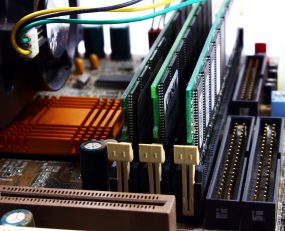
Underlying all of the drama around the trade war between China and the US there is growing evidence of a shift in the production patterns and supply chain of the electronics sector.
Reports over the past week suggest that a string of US and Japanese companies are extending their plans to move much of their assembly activities out of China. The Japanese newspaper, the Nikkei Asian Review reports that managers at HP, Dell, Microsoft, Amazon, Sony and Nintendo told its reporters that they had advanced plans to move production of a variety of products, such as ‘Notebook’ laptop PCs, games consoles and speakers, which are presently made in China to other economies. Compal Electronics and Quanta Computer, which are important contract manufacturing companies, are said to be considering doing the same whilst the PC manufacturers Acer, Asustek and even the Chinese owned Lenovo are beginning to look at their options. Already some contract manufacturers have moved server assembly operations out of China, although this was clearly in direct response to US tariffs.
The favoured locations for new operations are in South East Asia, especially Vietnam, although Taiwan is also attracting re-location of operations as well. However, economies in central Europe, Mexico, India and Turkey are also gaining business.
Apple has also been discussing publicly its plans to diversify its assembly away from China. Several weeks ago Apple became involved in a public controversy with Donald Trump after the company’s request for waiver from tariffs was refused. Apple seems to be struggling to source both components and assembly operations from outside China. Some production is already in the process of being moved, however it is believed that this represents a minority of Apple’s product output.
Although much of this relocation appears to be have been triggered by the imposition of tariffs by the US, the various managements consistently mention increasing costs in China of which higher wage costs are only a part.
The attraction of South East Asia as a production centre is not limited to those manufacturers who wish to exit China. Over the past year the South Korean mobile phone and consumer electronics producers have shifted large parts of their final product assembly operations from South Korea to Vietnam, driven by the need to control costs.
Although it is hard to separate the impact of the trade war from underlying cost issues, it seems that there may well be longer term factors involved in the movement of electronic assembly out of China. Other sectors, notably clothing, have already seen this. Therefore, it is probable that what is being seen is a large-scale change in global trading patterns.
Source: Transport Intelligence, August 15, 2019
Author: Thomas Cullen